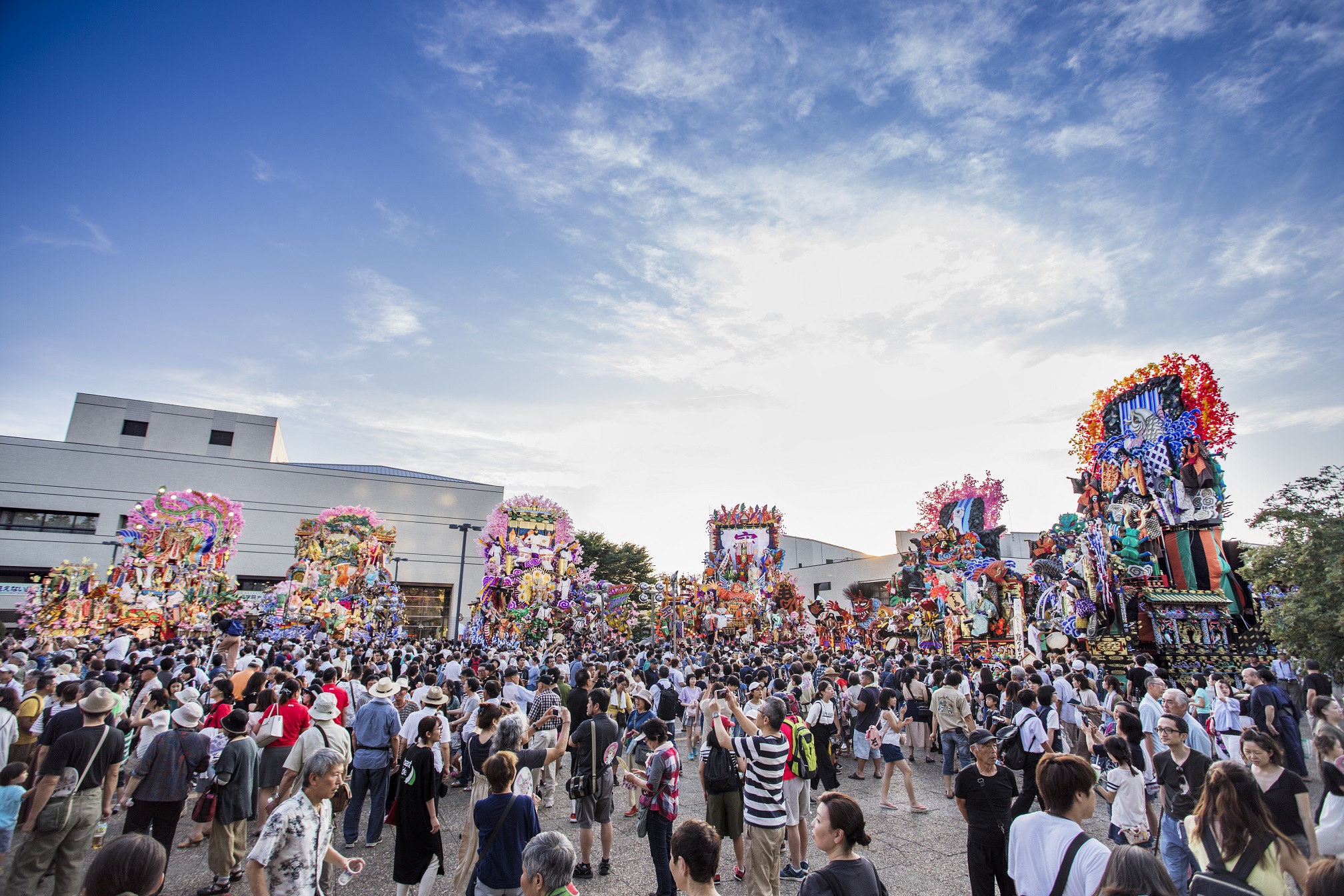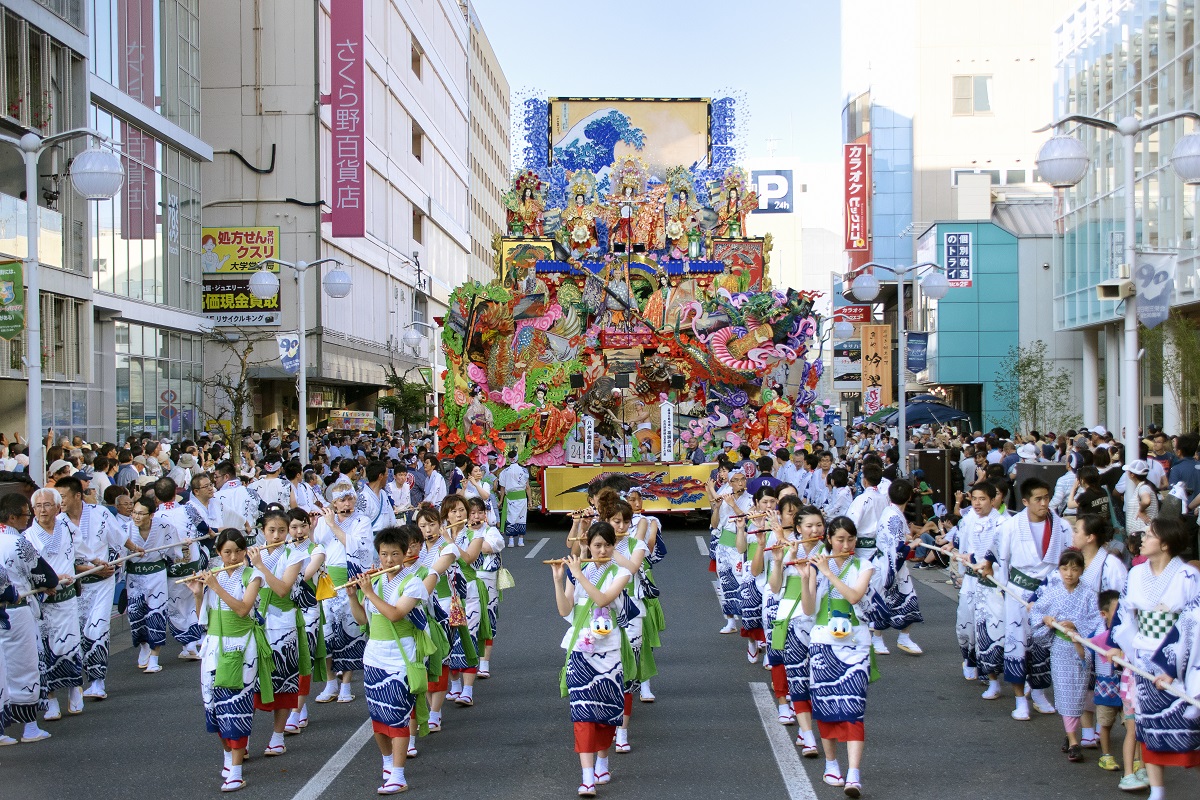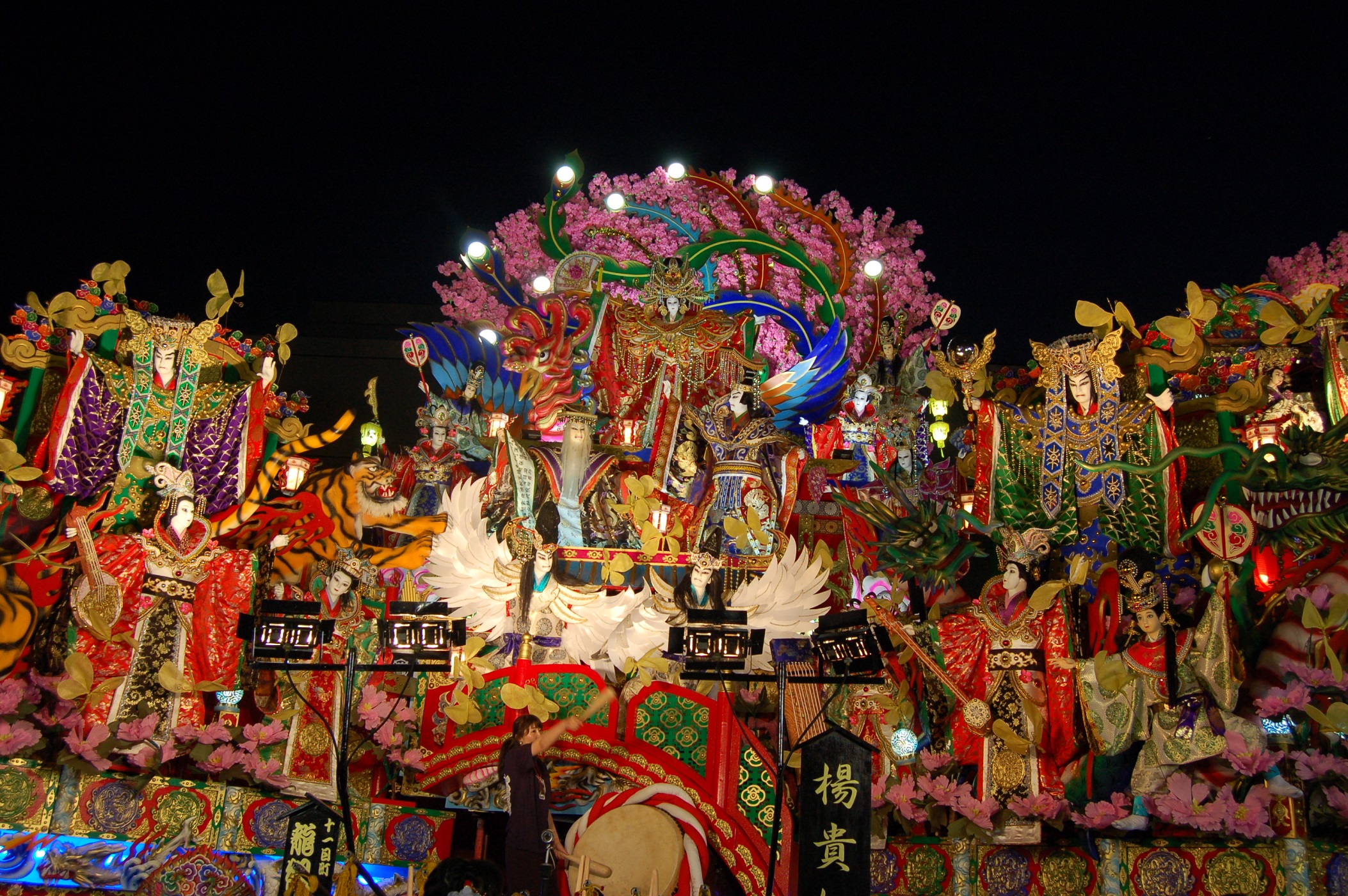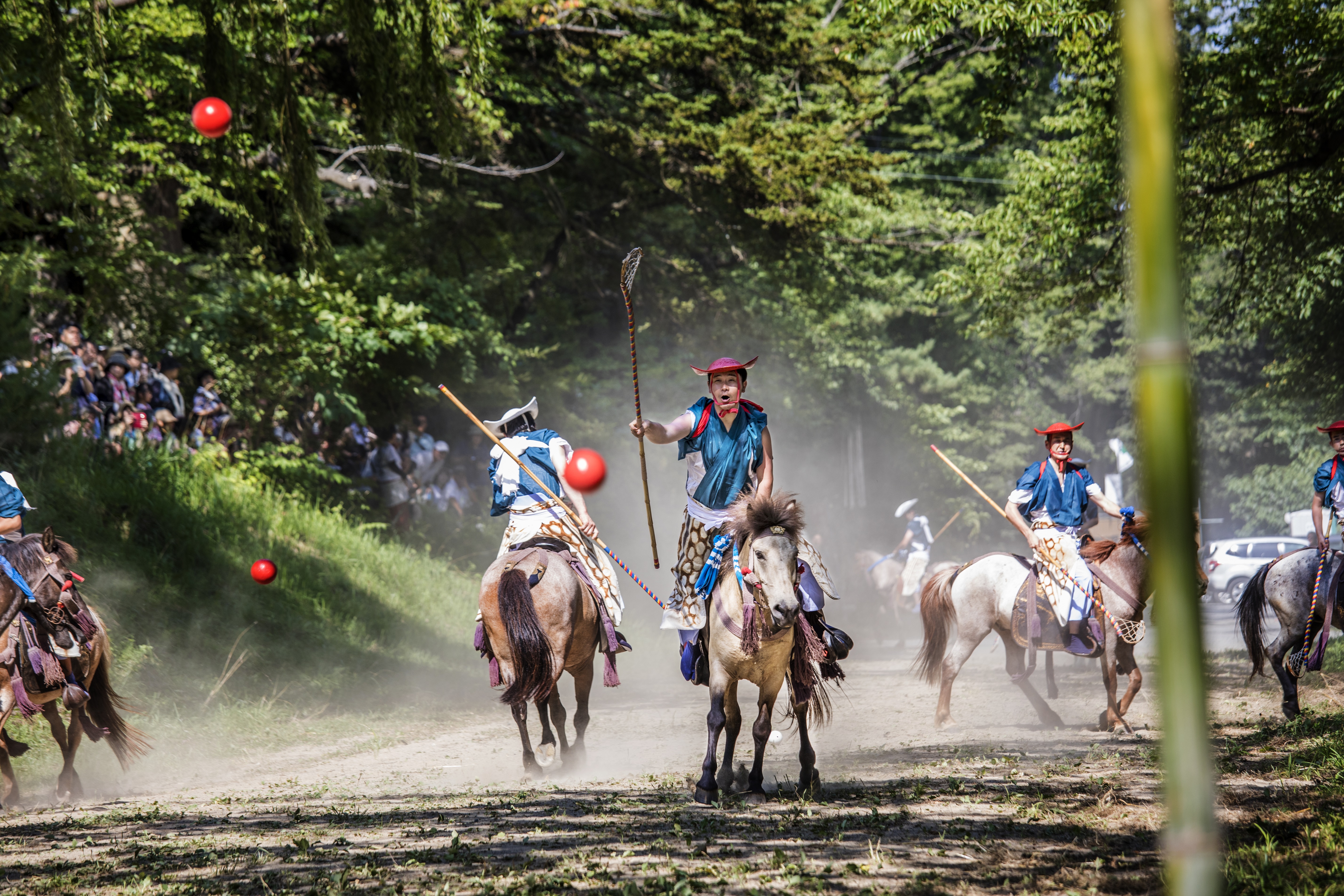The Hachinohe Sansha Taisai is the largest festival in the Hachinohe region, held every year from July 31 to August 4. The festival features a traditional procession of shrines and gorgeous floats, and was registered as a UNESCO Intangible Cultural Heritage “Yama, Hoko, Yatai Event” in December 2016.
To learn more about the Hachinohe Sansha Taisai, The Hachinohe Sansha Taisai (Three Shrine Festival).
News & Announcements
・Click here to make reservations for paid spectator seats.
The Hachinohe Sansha Taisai 2024 Schedule
July 31, 2024 (Wed.)
- 6 p.m. ~ 9 p.m.
- Civic Plaza in front of City Hall and the city center
August 1, 2024 (Thu.)
- 1:30 p.m.departure ceremony
- Ogami Shrine
- About 3 p.m. ~ 7 p.m.
- Departure from City Hall, City Center
August 2, 2024 (Fri.)
- 11 a.m. ~Chojasan Shinra Shrine Annual Festival
- Chojasan Shinra Shrine
- 1 p.m. ~ 2 p.m.Ogami Shrine Mid-day Festival
- Ogami Shrine
- 2 p.m. ~ 4 p.m.
- Chojasan Shinra Shrine
- About 6 p.m. ~ 9 p.m.
- Departure from City Hall, City Center
- 11 a.m. ~ 9 p.m.Festival Plaza
- Civic Plaza in front of City Hall Main Building
August 3, 2024 (Sat.)
- About 3 p.m. ~ 7 p.m.
- Departure from Kajicho, City Center
- 11 a.m. ~ 9 p.m.Festival Plaza
- Civic Plaza in front of City Hall Main Building
August 4, 2024 (Sun.)
- 6 p.m. ~ 9 p.m.
- Civic Plaza in front of City Hall Annex and City Center
- 11 a.m. ~ 9 p.m.Festival Plaza
- Civic Plaza in front of City Hall Main Building
The Hachinohe Sansha Taisai 2024 Events
July 31 Eve Festival/August 4 Night Festival

Hachinohe City Center, Hachinohe City Hall Plaza
On the first day of the festival, the eve of the festival, and on the final day, the night of the festival, 27 floats illuminated with lights are displayed all together in the center of Hachinohe City, and the competition between the glittering floats and musical performances enlivens the beginning and end of the festival.
In particular, the eve of the festival on July 31 is blast. It is a hot and fantastic sight, registered as a “Night View Heritage of Japan.
【How to enjoy the eve of the festival and the night after the festival】
Floats are displayed all together in the center of the city, and visitors can enjoy the festival while walking slowly and enjoying the mood of the festival as each group’s musical performance is played out. Please be careful to watch the floats, as they will be very crowded. Since the floats will not be moving, there will be no paid bleacher seats.
August 1: Otori / August 3: Okaeri

Hachinohe City Center
The “otori” and “okaeri”, which convey the past of the festival that originated from prayers for a good harvest and gratitude, are a historical picture scroll with an old-fashioned shrine parade and gorgeous floats.
In the parades of the three shrines, visitors can enjoy a variety of parades and performing arts, including “miko (shrine maidens) parade” and “samurai parade,” ” Horyo Kagura” with its refreshing sound, and “Toramai” (tiger dance) with its comical movements that excite the audience.
The highlight of the parade is the powerful float performance by as many as 27 floats. The floats, which can be up to 8 meters wide, 11 meters deep, and 10 meters high, are each equipped with a number of tricks. Whenever a float expands to the width of the street or the main puppet moves up and down, the crowd along the street is filled with cheers from the audience.
【How to enjoy the Otori and Okaeri】
Twenty-seven floats will be paraded through the center of Hachinohe City, and visitors will be able to watch the floats’ contraptions in motion and the shrine parade from the roadside. Also to be seen are the parade of the three shrines, the tiger dances and kagura that participate in the shrine parade, and a variety of other local performing arts.
To view the unfolded floats, we recommend that you go to the paid bleacher seats or the front streets (Nijusannichi-machi, Jusannichi-machi, and Mikka-machi for the Otori and Yoka-machi for the Okaeri). Please be aware that on the back streets (Nijurokunichi-machi, Jurokunichi-machi, Muika-machi, Tsuitachi-machi, etc.), the road width is narrow and the space available for the floats to deploy is limited.
Aug. 2 The middle day

Hachinohe City Center
The Kagami style Kibadakyu, which began in 1827, is performed in an old-fashioned style at the Chojasan Shinra Shrine.
At night, floats illuminated with lights will be carried through the city center. The floats have a different look and feel than during the daytime, and their moving mechanisms bathed in light add color to the night sky of Hachinohe’s summer.
The floats will be presented to the judges and an awards ceremony will be held on the stage in front of the Hachinohe City Hall on the middle day of the festival.
【How to enjoy the middle day】
The nighttime joint parade of floats illuminated by lights is a magnificent sight to behold. The gleaming floats float in the night sky, and their moving mechanisms, illuminated by lights, are a sight to behold. You can watch the festival from the roadside, but it is best to purchase paid seats to avoid the crowds.
Aug. 2 Kagami style Kibadakyu

Chojasan Shinra Shrine
The Kiba-dakyu is dedicated on August 2 (the middle day) at the Sakura-no-Baba of the Chojasan Shinra Shrine. In this classic sport, the horses collide with each other and fight for the ball.
In 1827, the 8th lord of the Hachinohe Domain, where horses were produced and horse sports was popular, Nobumasa Nanbu started this game to promote the martial arts.
